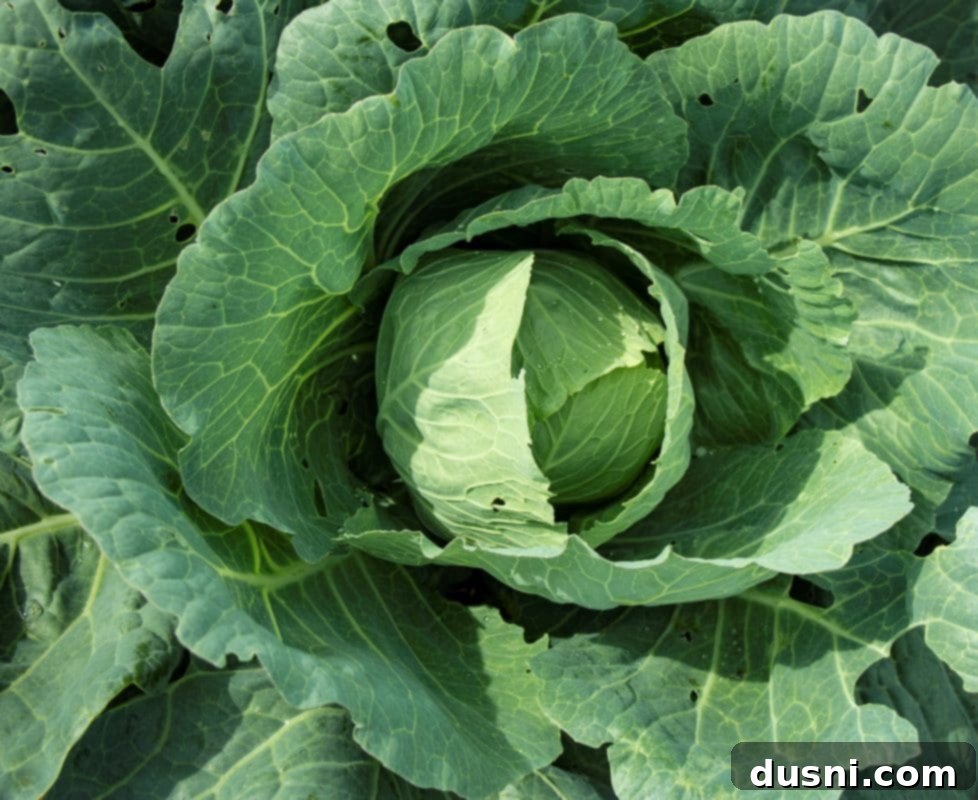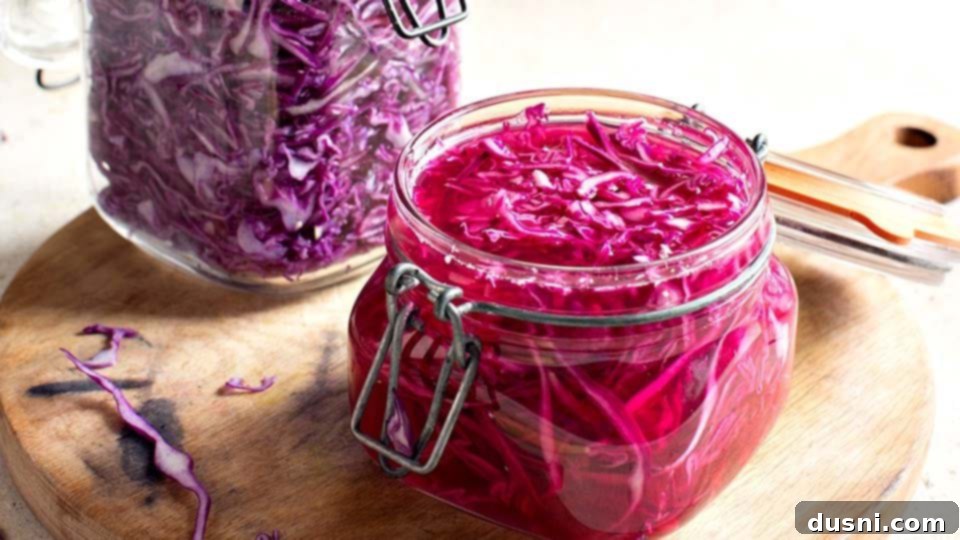Discovering Sauerkraut: A Comprehensive Guide to its History, Health Benefits, Culinary Versatility, and Homemade Preparation
With my Polish and German heritage, my passion for kraut runs deep. Whether you prefer to call it sauerkraut or simply kraut, the terms are synonymous, both deriving from German words related to cabbage or herbs. This fermented delight has been a staple in my family for generations, and its recent resurgence in popularity is a testament to its incredible flavor and health benefits.

For many, sauerkraut evokes images of a classic topping for a spicy Polish sausage at a ballgame. While undeniably delicious in that context, limiting your perception of kraut to just this application means missing out on an entire world of culinary possibilities! If you’re a fan of a traditional Reuben sandwich, then understanding kraut in its broader sense will undoubtedly elevate your Reuben experience to new heights.

Sauerkraut is incredibly versatile, gracing everything from hearty soups and refreshing salads to satisfying entrees and delectable appetizers. As you might have gathered, I am an enthusiastic advocate for this wonderful food, and I have a treasure trove of kraut recipes to share. It’s not just a matter of cultural heritage, though my Polish and German roots certainly play a part; kraut, or similar fermented cabbage dishes, are enjoyed in many cultures worldwide. Think of Korean kimchi, for instance – it’s essentially kraut by another name, showcasing a different cultural interpretation of fermented cabbage.

What Exactly is Sauerkraut?
At its core, sauerkraut is pickled cabbage, a name that translates literally to “sour cabbage” from German. The distinctive sourness and unique flavor profile come from a fascinating natural process called lacto-fermentation. This process begins with shredding cabbage and combining it with brine, a solution of salt and water. The salt in the brine plays a crucial role: it helps extract water from the cabbage, creating an anaerobic (oxygen-free) environment. This extracted water then dissolves the natural sugars present in the cabbage.
As the cabbage sugars break down, beneficial lactic acid bacteria (LAB) begin to thrive and convert these sugars into lactic acid. This is the fermentation that results in pickling. The lactic acid not only imparts the characteristic sour taste but also acts as a natural preservative. The acidity created inhibits the growth of spoilage microorganisms, allowing sauerkraut to remain edible and delicious for months, or even years, when stored properly.
The sour flavor is a direct result of this lactic acid fermentation and the proliferation of these incredibly healthy bacteria. What’s even more remarkable is that these beneficial microorganisms actively prevent the growth of harmful bacteria, including the dreaded botulism, making sauerkraut a safe and healthy food.
In this regard, sauerkraut shares common ground with other fermented foods like cucumbers pickled in brine (which become pickles) or kimchi, made by fermenting cabbage with brine and often red pepper. Essentially, it’s a traditional, non-heated method of food preservation through fermentation. While many commercial sauerkrauts today may include vinegar for a quicker pickling effect or added flavor, traditional sauerkraut relies solely on the power of lacto-fermentation.

The Rich History of Sauerkraut
While brands like my favorite, Frank’s Kraut, boast over a century of production, this is but a blink in the vast timeline of sauerkraut’s existence! The history of kraut stretches back thousands of years, far predating its common association with German, Polish, and Czech cuisines. Indeed, my family recipes spanning multiple generations attest to its deep roots in Eastern European culture, but its true origins are even more ancient and somewhat surprising.
Historical records suggest that fermented cabbage actually originated in ancient China, possibly as early as 2,000 years ago. It’s believed that laborers building the Great Wall were sustained by a diet of fermented cabbage and rice. This tradition then journeyed westward, most likely introduced to Europe by the Mongols. That’s right – legendary figures like Genghis Khan and Kublai Khan are thought to have introduced fermented cabbage to various regions as their empires expanded across Asia and into Europe. Imagine their armies conquering vast territories, fortified by the sustaining power of kraut! While other cultures certainly developed their own fermented cabbage traditions independently, the Mongols undoubtedly played a significant role in its widespread diffusion. They weren’t just engaged in burning and pillaging; they were inadvertently spreading a culinary revolution.

Pasteurized vs. Unpasteurized Kraut: What’s the Difference?
When browsing the aisles of your local market, you’ll encounter both pasteurized and unpasteurized sauerkraut options. While both are generally considered good for you, unpasteurized kraut offers significantly more health benefits due to its living probiotic content. The key distinction lies in the processing method.
Unpasteurized sauerkraut is a “live” food, teeming with beneficial bacteria, much like certain types of yogurt. These live cultures are the very essence of its probiotic power. You can easily identify unpasteurized kraut by checking the ingredient list: it will typically contain only cabbage, water, and salt. Some variations might include additional vegetables or spices, but the absence of vinegar or other strong preservatives is a good indicator.
Conversely, if you see vinegar or other preservatives listed, it’s a strong sign that the sauerkraut has been pasteurized. Pasteurization involves heating the sauerkraut to a high temperature to kill any potentially harmful bacteria and extend shelf life. However, this heat also unfortunately destroys the delicate beneficial bacteria that make unpasteurized kraut so valuable. Once these healthy microbes are gone, vinegar or other preservatives are often added to ensure preservation and prevent the growth of undesirable molds and bacteria. The vibrant, living bacterial ecosystem in unpasteurized kraut doesn’t just inhibit mold growth; multiple peer-reviewed studies have even shown that these probiotics may help inhibit the growth of certain cancer cells, underscoring the immense value of consuming kraut in its raw, unpasteurized form.

So, How Healthy is Sauerkraut?
Sauerkraut is a nutritional powerhouse, regardless of whether it’s pasteurized or not. It’s naturally low in sugar and high in fiber, and packed with essential vitamins, particularly Vitamin C and Vitamin K. For centuries, sauerkraut has been revered as a folk remedy, used to treat a variety of ailments and boost overall well-being. Its reputation for promoting good health is not just anecdotal; modern science is increasingly validating these traditional beliefs.
The high fiber content aids digestion and promotes gut regularity. Vitamin C is a powerful antioxidant and crucial for immune function, while Vitamin K is essential for blood clotting and bone health. However, the true star of sauerkraut’s health benefits, especially in its unpasteurized form, is its rich probiotic content. These live beneficial bacteria contribute to a healthy gut microbiome, which is linked to a stronger immune system, improved nutrient absorption, better mood regulation, and even protection against various chronic diseases. It’s always gratifying when ancient wisdom and modern scientific understanding converge to affirm the incredible benefits of foods like sauerkraut.

The Many Delicious Variations on Sauerkraut
While classic sauerkraut is typically made with finely shredded green cabbage, the world of fermented cabbage is far more diverse than many realize. Across different parts of Europe and beyond, you can discover a delightful array of variations, each with its own unique flavor and texture profile.
In Poland, for instance, traditional ‘kiszona kapusta’ often includes shredded carrots alongside the cabbage, adding a subtle sweetness and vibrant color. Another beautiful variety incorporates beets with the cabbage, which not only introduces an earthy flavor but also transforms the kraut into a stunning ruby-red hue, making it a feast for the eyes as well as the palate.
German culinary traditions frequently enhance cooked sauerkraut with aromatic additions like caraway seeds and juniper berries, which impart a warm, slightly peppery, and piney note. In the Alsatian region of France, recipes for ‘choucroute garnie’ often feature potatoes cooked directly with the kraut, absorbing its tangy flavors and creating a wonderfully comforting dish.
Beyond these regional specialties, kraut can be ingeniously incorporated into countless other preparations. It can be finely chopped and mixed into meatballs, adding a zesty kick and moisture. I have a fantastic meatball kraut recipe that I love to serve; it’s particularly effective at winning over those who claim to dislike sauerkraut. The trick, of course, is to keep it a secret until they’ve raved about how delicious they are!

How to Make Your Own Sauerkraut at Home
Making your own fresh, unpasteurized sauerkraut at home is a surprisingly simple and deeply rewarding process. All you need are a few basic supplies: mason jars, pickling salt (which is pure salt without anti-caking agents or iodine), water, and, of course, shredded cabbage. The beauty of homemade kraut is the control you have over ingredients and the assurance of live probiotics.
First, ensure your mason jars and lids are thoroughly sterilized to eliminate any undesirable bacteria that could compete with the beneficial ones. Allow them to cool completely before use, as heat can kill the good bacteria you’re trying to cultivate. Once cooled, begin building layers within your jars: alternate layers of shredded cabbage with sprinkles of pickling salt. As you add each layer, firmly pack the cabbage down. This pressing action helps to bruise the cabbage, releasing its natural juices, and creates a dense environment necessary for proper fermentation. For the salt-to-water ratio, a good guideline is one to three tablespoons of pickling salt per quart of filtered, non-chlorinated water, ensuring the salt is fully dissolved to create your brine.
After packing the cabbage and salt, add your prepared brine. The most crucial step is to ensure that the shredded cabbage remains completely submerged under the brine solution. Exposure to air can lead to mold growth and spoilage. You might need to use “fermentation weights” to keep the cabbage submerged. A fermentation weight is typically a glass disc designed to fit inside the jar, holding the cabbage down. You can often find these alongside mason jars, lids, and other canning supplies.
Once the cabbage is submerged, seal your lid tightly. Store the jars in a cool, dark place. A pantry or cupboard is ideal; avoid areas near heat sources like the stove or heater, as excessive warmth can accelerate fermentation too much or promote undesirable microbial growth. Let the jars sit undisturbed for approximately two weeks. During this time, the fermentation process will transform the cabbage into delicious sauerkraut. While two weeks is a good starting point, homemade kraut will actually store for much longer, often for several months in a cool environment or in the refrigerator once opened. After the fermentation period, open a jar, enjoy the tangy aroma, and take immense pride in knowing you’ve created something so simple, yet incredibly healthy and delicious!

Unleashing the Flavors: Delicious Kraut Recipes!
Now, we arrive at arguably the most exciting part: incorporating sauerkraut into a myriad of dishes! As I’ve mentioned, I’m a big fan of Frank’s Kraut, largely because of its consistent quality, excellent texture, and perfectly balanced tang that shines in so many recipes. Of course, whether you use another trusted brand, opt for unpasteurized varieties, or embark on the rewarding journey of making your own, the culinary possibilities are endless.
My heartfelt plea to you is this: please, don’t limit your imagination to only serving kraut with a hot dog in a bun. While a classic dog topped with kraut and mustard is undeniably satisfying, a vast culinary landscape awaits your exploration. Any ingredient that has been cherished and passed down through generations for thousands of years is bound to have evolved into an incredible array of delicious cuisines. Even centuries ago, creative chefs undoubtedly sought new twists and fun turns for their favorite foods, and kraut was no exception.

Here is a delightful mix of some of my family’s cherished recipes and other favorites I’ve discovered along the way:
- Bacon-Wrapped Pork Loin with Sauerkraut Stuffing – This is an absolutely classic Polish dish that showcases how perfectly pork and kraut complement each other. Add bacon into the mix, and you have a combination akin to chocolate and peanut butter, or vodka and your favorite mixer – truly meant for each other.
- Beer Cheese Soup with Sauerkraut and Kielbasa – A hearty German-inspired dish that pairs exceptionally well with a cold beer, especially a good German brew. The tang of the kraut cuts through the richness of the cheese and sausage beautifully.
- Quick Pretzel Bites with Sauerkraut – A delightful and surprisingly healthy snack! Warm pretzel bites served with a side of tangy kraut and a dollop of mustard. It also makes an excellent side dish for your beer cheese soup or bacon-wrapped pork.
- Steak and Kraut Pinwheels – Think kraut is only for pork sausages like bratwurst? Think again! Sauerkraut adds a fantastic counterpoint to the richness of steak, especially when combined with caramelized onions and white cheddar cheese in these savory pinwheels.
- Bacon Kraut Burger – Of course, I had to find a way to marry kraut with a classic burger! This recipe also includes bacon, a truly miraculous combination with kraut, much like a celebrity couple whose marriage has lasted over 20 years.
- Kraut-Stuffed Bacon-Wrapped Brats – Did you really think I wouldn’t include a bratwurst and kraut recipe? This elevates the classic by stuffing the brats with kraut and wrapping them in bacon for an explosion of flavor.
- Creamy Kraut and Mushroom Noodles – With a rich, creamy mushroom sauce and some delicious Frank’s kraut, this dish is a beloved family favorite that offers a comforting and unique flavor experience.
- Chicken Noodle Soup with Sauerkraut – This is another classic German dish. When people talk about chicken soup being an excellent remedy for colds and flu, I’m pretty sure they’re referring to a version enhanced with the wholesome goodness of sauerkraut.
- Pork Roast with Sauerkraut – A time-honored traditional favorite! You’d be hard-pressed to find a German restaurant that doesn’t offer this staple. If it’s not on the menu, you have every right to call the cuisine police immediately!
- Sauerkraut Meatballs – Perfect for both appetizers and entrees, these meatballs will surprise and delight your guests with their delicious and unexpected tangy twist.
- Sauerkraut Chocolate Cake – Don’t knock it until you’ve tried it! This is, hands down, the best chocolate cake I have ever eaten, offering an incredible moistness and subtle depth of flavor from the kraut.
So, if you’ve ever thought sauerkraut was just a simple topping for a Polish dog at a game, I hope you now understand the incredible depth and versatility it offers. I wholeheartedly encourage you to give my Kraut Recipes a try, and perhaps even embark on a little culinary experimentation of your own. Stick with me, because I’m always cooking up new sauerkraut recipes to share with you! Be sure to follow my Sauerkraut Board on Pinterest for even MORE inspiring ideas!

